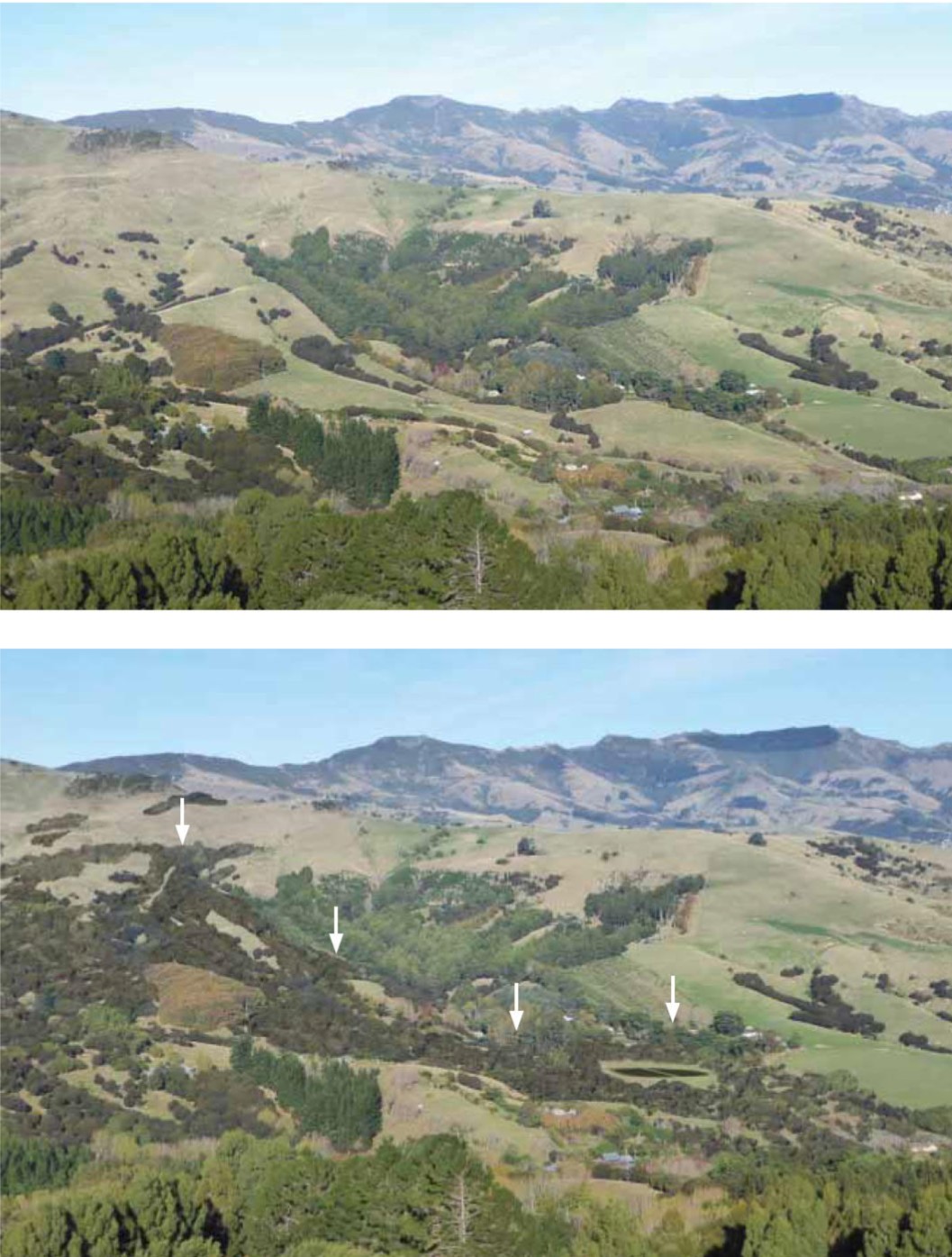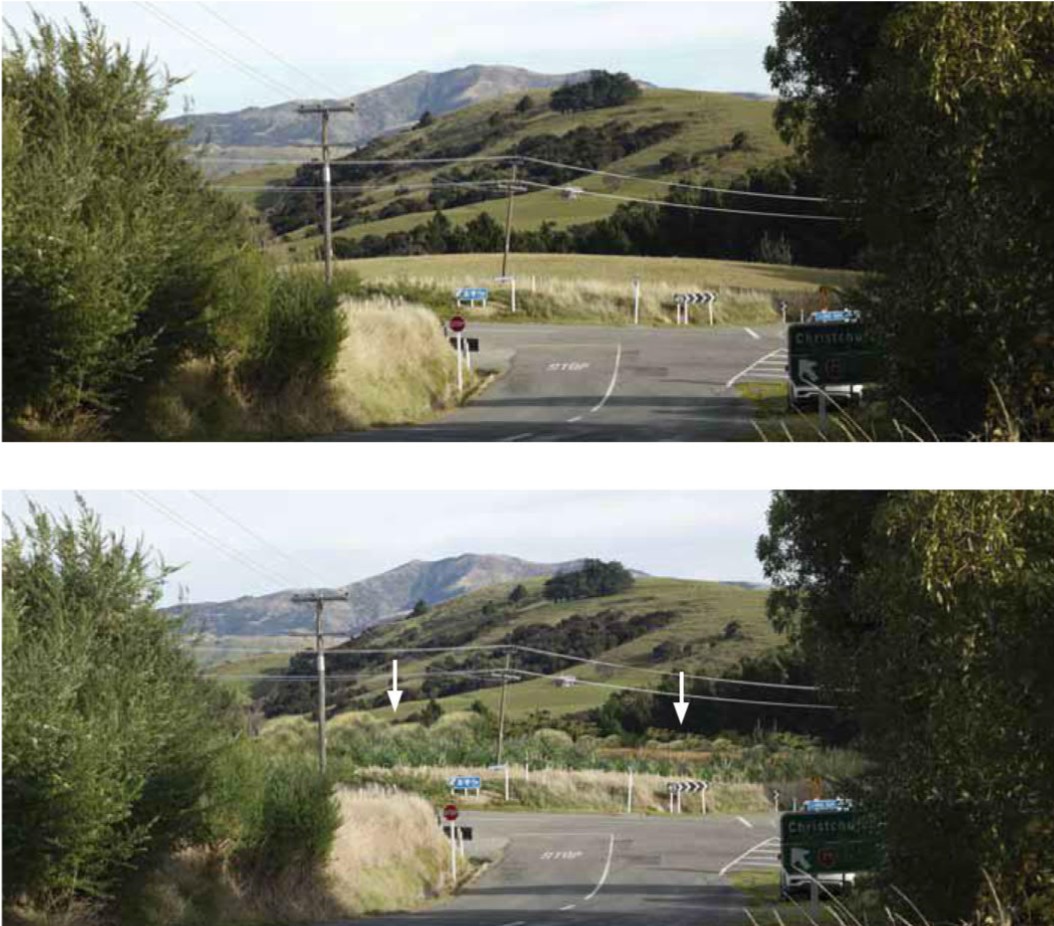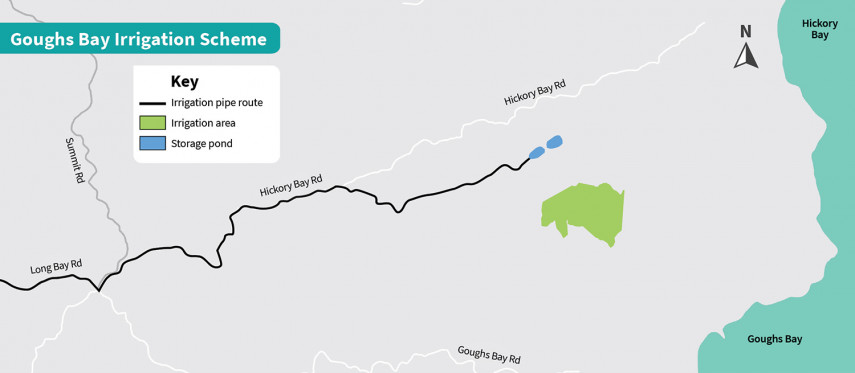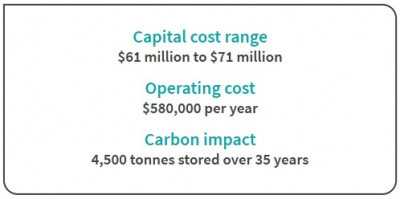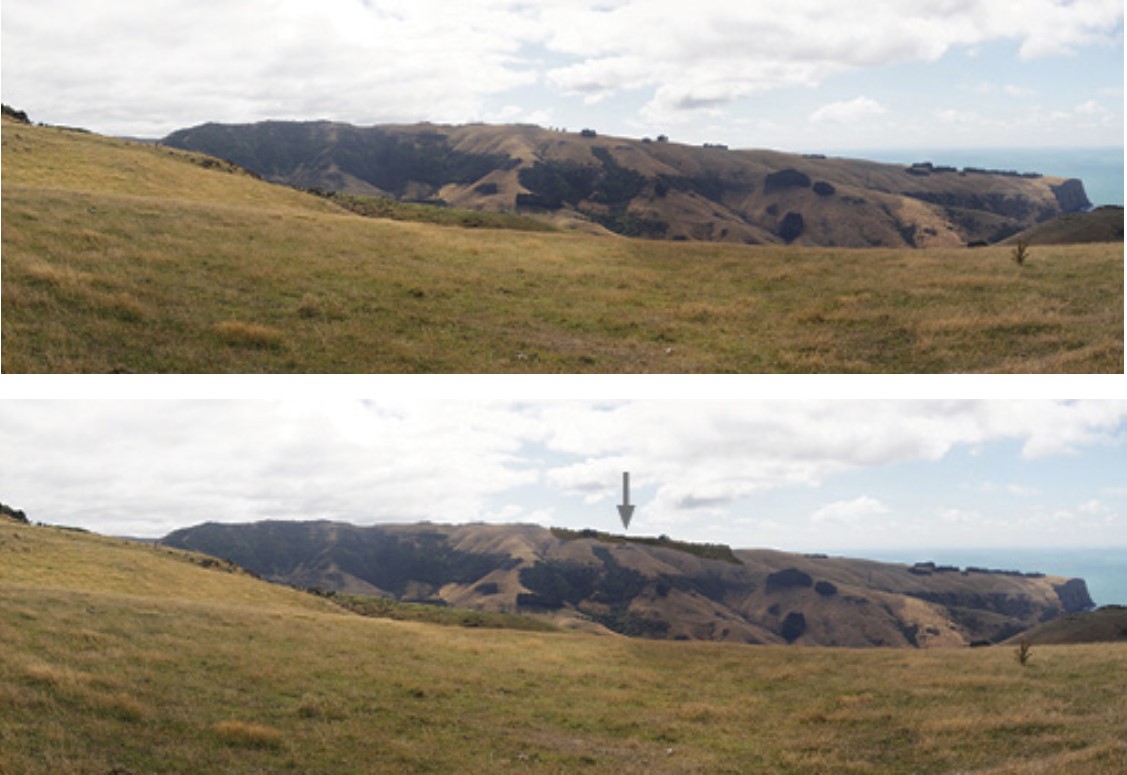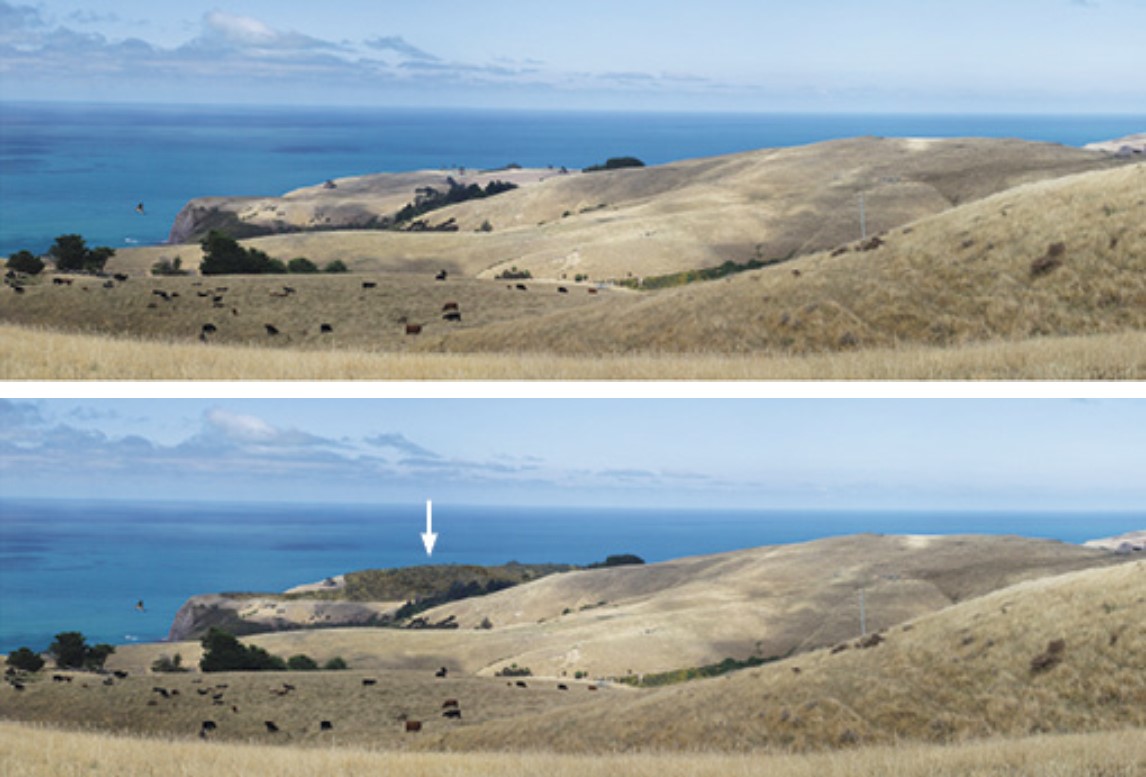We are building a new wastewater system for Akaroa. We are seeking feedback on what to do with the highly treated wastewater.
Share this
Consultation has now closed
Consultation on the Akaroa treated wastewater project has now closed. People were able to provide feedback from 20 July to 24 August 2020.
During this time we heard from 341 individuals and groups.
Akaroa treated wastewater submissions [PDF, 751 KB]
Attachments to submissions [PDF, 17 MB]
Hearings and decision-making meeting
A staff report has been presented to the hearings panel for consideration. Following all hearing meetings, the panel will make a recommendation to the Councillors and Mayor, who will make the final decision on this project.
Heard submissions and not heard submissions(external link)
Schedule of submissions and additional submissions(external link)
The hearings are open to the public and will be taking place on:
- Monday 12 October, 9am, Gaiety Hall, Rue Jolie, Akaroa
- Tuesday 13 October, 12.30 pm, Gaiety Hall, Rue Jolie, Akaroa
- Friday 16 October, 2 pm, Council Chambers, Level 2, Civic Offices, 53 Hereford Street, Christchurch
Deliberations, where the panel work on their recommendation is due to take place on:
- Wednesday 28 October, 2pm Council Chambers, Level 2, Civic Offices, 53 Hereford Street, Christchurch. This is also open to the public and it will be live streamed to the boardroom in the Council service centre in Akaroa.
The hearings panel comprises of five elected members - City Councillors Pauline Cotter, Mike Davidson, and Sara Templeton, and Banks Peninsula Community Board members Nigel Harrison and Tori Peden.
You can read the minutes(external link) from the hearings panel meeting which includes the hearing panel recommendation and the attachments to the minutes(external link). The hearings panel report with their recommendation will be presented to the Councillors and Mayor for a final decision on 10 December 2020. This meeting is a public meeting, so anyone is welcome to attend. This meeting will also be live streamed(external link) from the Council website.
Update: 12 October 2020
Our legal Services Unit have provided a memo [PDF, 597 KB] to the Akaroa Treated Wastewater Options Hearings Panel about the legal context of the Ngāi Tahu parties’ submission on the 'discharge to harbour' option.
We are building a new wastewater system for Akaroa. In our Long Term Plan 2018 to 2028 we budgeted $35 million for this work, which includes a new wastewater treatment plant, upgrades to pipes and pump stations, and a new system for disposing of treated wastewater.
Akaroa’s current wastewater treatment plant and harbour outfall are in a culturally and historically sensitive place and they are old and need to be replaced. Doing nothing is not an option.
We already have consents for the new wastewater treatment plant to be built on Old Coach Road and for the new pump station in the boat park at Childrens Bay.
We are seeking feedback only on what to do with the highly treated wastewater when it leaves the plant.
Overview
The environment around Akaroa township features a harbour, steep slip-prone hillsides and soils with poor drainage. This limits our treated wastewater disposal options.
We have worked with the Ngāi Tahu parties and the Akaroa Treated Wastewater Reuse Options Working Party (working
party) on the four options outlined in this booklet.
The Ngāi Tahu parties we refer to are Ōnuku Rūnanga, Te Rūnanga o Koukourarata, Wairewa Rūnanga, the Akaroa Taiāpure Management Committee and Te Rūnanga o Ngāi Tahu.
The working party comprises two members of the Banks Peninsula Community Board, Banks Peninsula Councillor Andrew Turner, two representatives each from Ōnuku Rūnanga and Te Rūnanga o Koukourarata, members representing various communities of the peninsula, and an independent chairperson. It was established by the Banks Peninsula Community Board to help us investigate land-based alternatives to discharging treated wastewater into Akaroa Harbour.
The working party noted that getting to this point, with four final options, was a long and difficult process. Our consultant’s technical report, detailed maps, the working party’s terms of reference, its joint statement [PDF, 6.5 MB], the Ngāi Tahu parties’ statement [PDF, 629 KB], and other information about this project are available on our Have Your Say website. This is a summary of the options developed from that information.
There is also a booklet with this information, it is available to view at service centres and libraries or you can view it online [PDF, 2.1 MB].
What we're asking

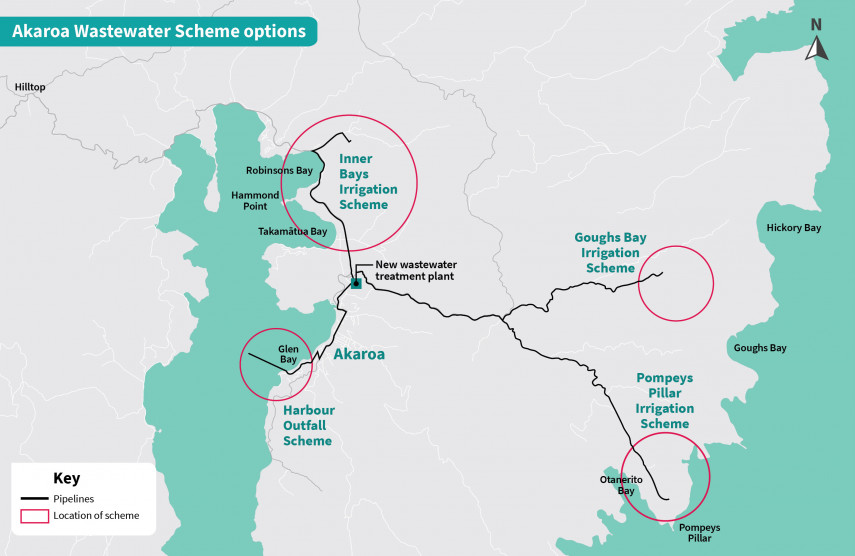
Come and talk to us
Gaiety Hall supper room, Rue Jolie, Akaroa
Sunday 2 August
2pm to 3.30pmCivic Offices, first floor meeting room (opposite the function room)
53 Hereford Street, Christchurch
Tuesday 4 August
5.30pm to 7pmGaiety Hall supper room, Rue Jolie, Akaroa
Monday 10 August
5.30pm to 7pm
Relevant law
- The decision by the Council on which option to pursue is subject to the Local Government Act. This Act sets out the purpose of local government and the principles local authorities must apply. These include taking a sustainable development approach and taking into account the social, economic environmental and cultural wellbeing of communities now and in the future.
- The Local Government Act decision-making process requires us to consider all reasonably practicable options for achieving the objective of the decision and to consider the advantages and disadvantages of each option. We must take into account the relationship of Māori and their culture and traditions with their ancestral land, water, sites, waahi tapu, valued flora and fauna, and other taonga. We must also consider the views and preferences of people likely to be affected by, or with an interest in, the decision to be made. We are consulting for this reason, including to better understand the social and cultural wellbeings of the community.
- Implementation of the chosen option will then be subject to the Resource Management Act.
Risks
As with any big infrastructure project, we need to consider the risks – both the project risks and the risks of not doing anything. Risks identified with the option eventually chosen will be managed appropriately during the design and construction stages. They will also be considered and evaluated through the resource consenting process. For more information about risks, please refer to the technical report.
Ngāi Tahu perspective
To recognise Crown obligations under Te Tiriti o Waitangi – The Treaty of Waitangi we provide opportunities for Iwi to contribute to and participate in our decision making.
Ngāi Tahu rights and interests associated with Akaroa Harbour are strongly focused on mahinga kai, food gathering. Discharging treated human waste into the harbour is culturally offensive to Ngāi Tahu and is not compatible with their customary use of the harbour as a ‘food basket’.
As tāngata whenua, Ngāi Tahu have kaitiaki (guardianship) rights and responsibilities to actively protect natural resources in Akaroa for future generations. To protect and enhance the mauri, or life force, of the harbour Ngāi Tahu want the discharge of wastewater into Akaroa Harbour to stop.
Wastewater, or sewage, is the used water from households, businesses and industries. It includes everything flushed down a toilet and water used for bathing and showering, washing clothes and dishwashing. It also includes groundwater and storm water that has seeped into the network. There are high levels of this infiltration into the Akaroa network, with groundwater and storm water accounting for about half of the overall wastewater flow in some years, depending on rainfall.
What we currently do
Treated wastewater from an old (1960) treatment plant is discharged into Akaroa Harbour at Takapūneke-Red House Bay, via a 100-metre long pipeline known as an outfall.
The four options
The Mayor and Councillors will be asked to select one of our four options as the new wastewater disposal scheme for Akaroa. In the following pages we explain each option in more detail, with a map for each option. There will be information sessions in Akaroa and Christchurch during the consultation period. Staff will be available at these sessions to discuss the proposals and to answer questions.
The four options at a glance

Treatment process
- All wastewater will be treated at the new treatment plant on Old Coach Road (consented but not yet built).
- All wastewater will be treated to a significantly higher level than is possible at the existing plant. Akaroa’s wastewater will be treated to a level that is among the highest anywhere in New Zealand.
- The new treatment plant will include a covered storage pond for untreated wastewater, to smooth out peak flows to the treatment plant. It will be surrounded by landscape planting and will not be visible from the road once the plants have grown. We will be seeking consents to build it on land we own over the road from the new treatment plant.
- The wastewater scheme, including storage ponds, will be designed and engineered to be resilient to earthquakes, landslips, storms and flooding.
Purple pipe scheme
Any of the four options could include a non-potable (not for drinking) water reuse scheme (purple pipe scheme). To make the treated wastewater safe for such use, we would include ultraviolet (UV) treatment as an additional level of treatment.
This highly treated non-potable (not for drinking) water supply could be used for irrigating Council-owned parks and sports grounds and for flushing public toilets. It would use approximately 4 per cent of the treated wastewater.
It would cost an additional $3.7 million to install a purple pipe if one of the land-based options is chosen, or $270,000 if the harbour outfall is chosen (lower cost because the outfall pipe through town would double as the purple pipe).
A purple pipe scheme, if added to the chosen scheme, would include a second covered storage pond for highly treated wastewater on land we own over the road from the new treatment plant, to ensure a safe and reliable supply.
At present reusing treated wastewater on residential properties is not approved by the Ministry of Health because central government agencies are yet to set the necessary health and other standards for this type of water recycling.
We anticipate such use will be possible and widespread in New Zealand in future as communities grapple with water shortages due to climate change.
In this consultation, we are interested to know what people think about this idea. If it receives a good level of support, we would consider lobbying central government agencies to change the regulations to allow non-potable reuse schemes in New Zealand.
Irrigating native trees
The three land-based options all involve planting native trees and irrigating them with the highly treated wastewater.
The irrigation would be by pipes with drippers on the ground, which would not be visible in the landscape. Small pumps would be used to disperse the highly treated wastewater to the drippers.
These new areas of native trees would create new habitats for insects, birds and other wildlife, increasing the biodiversity of the area and providing ecological benefits.
The trees would thrive on the plentiful water supply and would not be subjected to drought.
All three land-based options support our goal to be carbon neutral by 2030 (native trees absorb and store more carbon than the scheme would emit) and we could apply to the government’s One Billion Trees Programme for funding. They also align well with our Climate SmartStrategy and Integrated Water Strategy.
Land selection
- We used the following criteria to identify land suitable for irrigation:
- A slope of less than 19 degrees in the irrigation area and not more than 15 degrees downhill of the irrigation area (relatively flat land, to reduce instability in the irrigation area and to downhill land).
- A buffer of 1 hectare around individual houses in the possible irrigation area, to allow for onsite wastewater disposal, such as a septic tank or composting toilet.
- A buffer of 5 metres to the property boundary.
- A buffer of at least 25 metres to permanent streams and the coast, and 10 metres to ephemeral streams.
- Property size of at least 2 hectares.
- No land stability issues found in preliminary investigations.
The land needed for irrigation and storage ponds could be acquired by purchase, lease and/or licence. Our strong preference is to negotiate with willing landowners. However, if that is not possible, we could seek to use the Public Works Act, as a last resort, to acquire the land.
Pipes
The treated wastewater will be piped to the irrigation areas along public roads and the pipes will be buried.
Property owners along the pipeline routes could join the irrigation scheme if they wished, for farm irrigation and stock water, but would need a resource consent.
Storage ponds
Storage ponds are needed to hold the treated wastewater during times when irrigation is not possible and to supply the irrigation system.
In periods of sustained wet weather, irrigation would be stopped, to avoid run-off risks, with the highly treated wastewater being stored in ponds at the irrigation site. This water would be used when irrigation resumes.
The land criteria for storage ponds are similar to those for irrigation and include a slope of no more than 4 degrees and a buffer distance of at least 100 metres from any house.


This option involves developing three new areas of native trees on four properties and a new wetland on land we own opposite the new treatment plant, in addition to the storage pond on the site.
The irrigation sites and the storage ponds at the irrigation sites would be closer to the treatment plant than in the other land-based options and closer to settled areas and houses.
New areas of native trees
Three new areas of native trees would be planted and irrigated with highly treated wastewater.
The total area of land needed for irrigation would be 40 hectares, over the three sites.
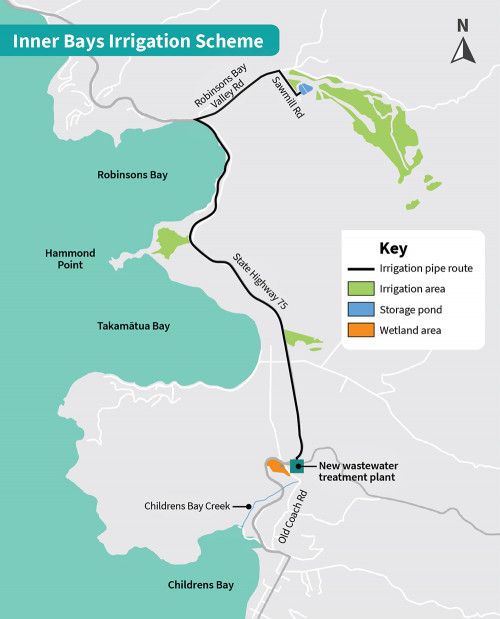 We have identified the following areas of land as being most suitable:
We have identified the following areas of land as being most suitable:
- A farm on Sawmill Road in the Robinsons Bay valley and a strip of land neighbouring the farm.
- The flat land on the north side of Takamātua Valley, on the east side of State Highway 75.
- Land on Hammond Point, on the west side of State Highway 75 between Takamātua and Robinsons Bay.
There are other areas of land in Takamātua Valley and Robinsons Bay that also meet the criteria for irrigation, but they are less favoured because the irrigation areas are smaller.
The new native tree areas would be open to the public.
Please note for Takamatua Valley:
If the Duvauchelle A&P Showground and Pony Club need to move to this site because of the wastewater project there, this area would be irrigated pasture and more trees would be planted at the Hammond Point irrigation site.
New wetland
A wetland would be created across the road from the new treatment plant on Old Coach Road, next to the covered
storage pond.
The wetland is an important part of this scheme and would provide 2,200 cubic metres of additional storage for highly treated wastewater (without it we would need bigger storage ponds at Robinsons Bay). The wetland would also provide the treated wastewater with additional treatment through naturally occurring processes.
The wetland would also make the new treatment plant and disposal system more resilient to wet weather events. Natural biological and chemical cleansing would further reduce contaminants, giving us the ability to release the highly treated wastewater from the wetland to the harbour, in the event of a period of extreme wet weather (expected on average once every five years).
In this scenario, highly treated wastewater would discharge from the wetland into the harbour at Childrens Bay, via the Childrens Bay Creek.
Normally there would be no discharge from the wetland.
The wetland would be planted with native wetland plants, providing new habitats for insects, birds and other wildlife.
We would maximise opportunities to improve the ecology and biodiversity and ensure community and Ōnuku Rūnanga participation in some aspects of the site design, including which species to plant there. The wetland would be open to the public. Over time, it would offer opportunities for recreation, education and other activities.
Pipeline and storage
A 5.6 kilometre gravity-fed pipeline would run 4.4 kilometres along State Highway 75 and 1.2 kilometres along Robinsons Bay Valley Road and Sawmill Road.
Two storage ponds, each with a capacity of 9,500 cubic metres, would be built on the irrigation site on Sawmill Road in Robinsons Bay. They would store highly treated wastewater from the new treatment plant during periods of wet weather when the land is too wet to irrigate, so would be only partially full most of the time.
They would be built with earth embankments (bunds) and lined with high-density polyethene. The ponds would be cut into the existing slope with a bund 4 metres high extending above ground at the downhill end. The area around the ponds
would be landscaped and planted with native trees.
The two ponds would be side by side and separated by an earth embankment.
An additional bund would be built on Sawmill Road to prevent a neighbouring house from flooding in the unlikely event of a storage pond failure.
Council Staff see these advantages
- All Akaroa’s treated wastewater would be beneficially reused to create a new wetland and three new native bush areas
- Ecological, cultural, recreational and educational benefits from wetland and native bush areas
- Storage ponds gravity-fed from the new wastewater treatment plant
- Pipeline more resilient than for the other land-based disposal options
- Highly treated wastewater available for farm irrigation and stock water along pipeline route
- Least expensive land-based option (lower capital and operating costs)
- Most land owners appear willing to negotiate with us
New area of native trees
The Goughs Bay irrigation site is relatively remote, with no onsite dwellings and few neighbouring properties. It is a considerable distance, about 11 kilometres, from the new wastewater treatment plant.
This option would give us the opportunity to develop a new area of native trees. It may be open to the public but this is not decided yet.
Highly treated wastewater would be piped to land above Goughs Bay and used to irrigate native trees. The total area of irrigated land needed would be 33 hectares.
Treated wastewater would be stored onsite in up to three ponds.
Pipeline and storage
Treated wastewater would be pumped through a high-pressure pipeline up over the hills east of Akaroa to an elevation of 677 metres.
The pipeline would run up Long Bay Road to its summit then along Hickory Bay Road for 8.2 kilometres. It would then follow a paper road, travelling 2.4 kilometres along the ridge between Hickory and Goughs bays. We own the paper road, which passes through several farms. The existing track (along the paper road) would need to be upgraded for the pipeline construction and would continue to be used by the farms it passes through.
Up to three storage ponds would be built on the farm. They would be dug into the hill with earthen bunds and lined with high-density polyethylene. The total volume of the storage ponds would be about 30,000 cubic metres. The ponds would be only partially full most of the time and there would be no discharge into the sea, except in an extreme emergency.
Council staff see these advantages
- All Akaroa’s treated wastewater would be beneficially reused to create a new native bush area
- Ecological benefits from new areas of native bush
- Highly treated wastewater would be available for farm irrigation and stock water along the pipeline route
Council staff see these disadvantages
- More expensive than Inner Bays Irrigation Scheme or Harbour Outfall Scheme, with higher capital and operating costs
- Pumping treated wastewater up and over the hill along remote rural roads may make it vulnerable to breakdown
and/or damage - Landowner not willing to sell their land or use treated wastewater on it
New area of native trees 
Pompeys Pillar is relatively remote, with few onsite dwellings and few neighbouring properties, and is a considerable distance – about 13 kilometres – from the new wastewater treatment plant.
Treated wastewater would be piped to land at Pompeys Pillar and used to irrigate native trees. The total area of irrigation land needed would be 48 hectares.
There would be no discharge into the sea, except in an extreme emergency.
The new native bush area may be open to the public, but this is not decided yet.
Pipeline and storage
The treated wastewater would be pumped, through a high-pressure pipeline about 13 kilometres long, up and over a hill with an elevation of 631 metres.
The pipeline would run up Long Bay Road to its summit then down Fishermans Bay Road to the irrigation area.
A single storage pond would be built on the farm by damming an ephemeral stream (ephemeral streams are temporary and appear only after rainfall). The pond capacity would be 36,000 cubic metres.
Council staff see these advantages
- All Akaroa’s treated wastewater would be beneficially reused to create a new area of native bush
- Ecological benefits from new native bush
- Highly treated wastewater available for farm irrigation and stock water along the pipeline
Council staff see these disadvantages
- Most expensive option, with the highest capital and operating costs
- Pumping treated wastewater up and over the hill along remote rural roads may make it vulnerable to breakdown and/or damage
- Landowner not willing to sell their land or use treated wastewater on it

Highly treated wastewater would be discharged into the middle of Akaroa Harbour via a new, longer outfall pipeline.
A new wastewater pipe would run from the new treatment plant on Old Coach Road, through Akaroa and out into the middle of the harbour from the south end of town, probably entering the harbour at Glen Bay (depending on final design work).
The pipeline would be fully buried for its entire length along Council-owned land and roadway, and below the sea floor out into the harbour.
The harbour section of the pipeline would extend 1.2 kilometres into the mid-harbour, where the treated wastewater would be discharged via a diffuser.
The diffuser would be 9.5 metres below the water surface. The treated wastewater discharged would be diluted at least 78 times before it reached the surface then further diluted by natural currents and tidal flows. There would no visible effect.
As the wastewater entering the harbour would be highly treated, the public health risk to people using the harbour for recreational activities or for gathering shellfish would be very low (the wastewater would be treated to a much higher level than that which is discharged to the harbour at present). However, the adverse effect on the Ngāi Tahu parties’ cultural value in gathering fish and shellfish would be high.
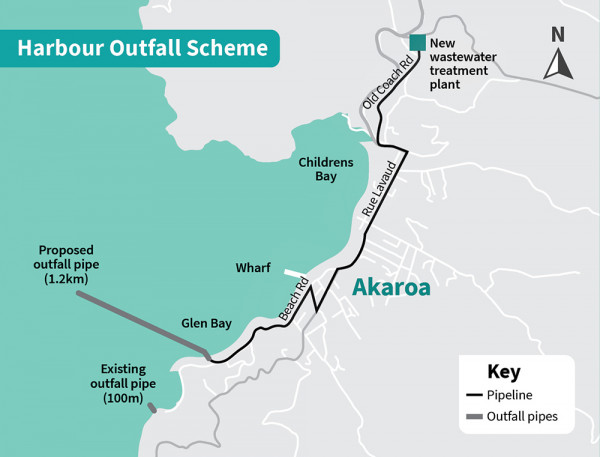
Council staff see these advantages
- No additional land needed
- Treated wastewater would flow by gravity to the outfall
- Lower capital, operating and maintenance costs than for any of the other options
Council staff see these disadvantages
- No beneficial reuse of highly treated wastewater, unless purple pipe system included
- May be risk, albeit very low, to public health from swimming, other recreational activities and from eating raw shellfish from the area
- Conflicts with our goal to be carbon neutral by 2030.
- It undermines the relationship of tangata whenua and their culture and traditions with their ancestral land, water, sites, waahi tapu, valued flora and fauna, and other taonga.
- The New Zealand Coastal Policy Statement and the Regional Coastal Environment Plan aim to avoid the discharge of treated human waste into water in the coastal environment, unless there has been adequate consideration of alternative methods. A harbour outfall may not be sustainable management under the Resource Management Act and may not be considered a reasonably practicable option under the Local Government Act if there are other options for disposal to land that achieve the purpose of those acts.
Council staff, the Ngāi Tahu parties and the Akaroa Treated Wastewater Reuse Options Working Party have had long involvement in identifying suitable disposal options for highly treated wastewater from Akaroa.
Each group has its own view of each option and these are summarised below.
 Inner Bays Irrigation Scheme
Inner Bays Irrigation Scheme
Ngāi Tahu view
Ngāi Tahu prefer this option. They say one of the roles of Papatūānuku (Earth Mother) is to cleanse. By having the treated wastewater pass through or over land and allowing for natural filtration to occur, Ngāi Tahu consider it will no longer compromise the harbour, making it safe for the cultural practices that occur there, such as mahinga kai (food gathering). Ngāi Tahu see the wetland as enhancing the natural cleansing process.
Working party view
The working party could not reach an agreed opinion of this scheme. Some members strongly oppose it, citing concerns about risk and a belief that it will have unacceptable environmental, social and cultural impacts and will affect the quality of life of nearby residents in a negative way. Other members, including rūnanga appointees, favour this option over all others, citing environmental and ecological benefits and viewing it as the most sustainable, affordable, resilient and practical of the three land-based options.
Council staff view
Council staff prefer this option because it is the least expensive and most resilient option that avoids discharging treated wastewater to the harbour. Creating a wetland and three new areas of native trees makes good use of the highly treated wastewater, with ecological, educational and recreational benefits. It provides for the cultural needs and aspirations of the Ngāi Tahu parties and aligns well with our Climate Smart Strategy and Integrated Water Strategy.
Goughs Bay Irrigation Scheme
Ngāi Tahu view
Ngāi Tahu support this option because it allows Papatūānuku (Earth Mother) to further cleanse the highly treated wastewater as it passes over and through the land through natural filtration processes. When the wastewater eventually reaches the sea it is no longer considered a risk to cultural practices such as mahinga kai (food gathering).
Working party view
The working party could not reach an agreed opinion of this scheme, although it has more support than other options with most members supporting it as either their first or second choice. Some members support the scheme because of its remoteness and distance from dwellings. Others oppose it, citing concerns about the high-pressure pipeline, costs and a belief it would have a negative effect on the environment and the community.
Council staff view
This option is the second preference of staff because it avoids a discharge to the harbour, makes good use of the treated wastewater to irrigate native trees and supports the cultural needs and aspirations of the Ngāi Tahu parties. This option is the third most expensive to build, operate and maintain and the pipeline may be vulnerable to breakdown and/or damage. We would be negotiating with an unwilling land owner.
 Pompeys Pillar Irrigation Scheme
Pompeys Pillar Irrigation Scheme
Ngāi Tahu view
Ngāi Tahu support this option because it allows Papatūānuku (Earth Mother) to further cleanse the highly treated wastewater as it passes over and through the land through natural filtration processes. When the wastewater eventually reaches the sea it is no longer considered a risk to cultural practices such as mahinga kai (food gathering).
Working party view
The working party does not favour this scheme. Members see no benefit in the option being included for consideration and would like it withdrawn. Members cite its distance from Akaroa, which is further than Goughs Bay, and that the farm has been in family ownership for seven generations.
Council staff view
This option is the third preference of staff because it avoids a discharge to the harbour, makes good use of the treated wastewater to irrigate native trees and supports the cultural needs and aspirations of the Ngāi Tahu parties. It is the most expensive to build, operate and maintain and the pipeline may be vulnerable to breakdown and/or damage. As with the Goughs Bay scheme, we would be negotiating with an unwilling land owner.
Harbour Outfall Scheme
Ngāi Tahu view
Ngāi Tahu do not support this scheme. They see the discharge of human sewage, even as highly treated wastewater, into the harbour as being highly offensive. Ngāi Tahu say the ability to harvest kaimoana (sea food) from the harbour is central to the ability of marae to practice manaakitanga (hospitality, care) for visitors. Theyare strongly opposed to the treated wastewater being put into the harbour, which is used for mahinga kai and is home to tribal taonga (treasures) such as the pahu (Hectors dolphin). They say stopping discharges of contaminants to the harbour is in the interest of all harbour users and the community as a whole, not just tangata whenua.
Working party view
The working party was established to help us identify land-based alternatives to a harbour outfall, and therefore did not assess the harbour outfall option.
Council staff view
This is the option staff least prefer because highly treated wastewater would be discharged directly to the harbour, which does not support the cultural needs and aspirations of the Ngāi Tahu parties. It also does not beneficially reuse any of the wastewater unless a purple pipe scheme is included.
Future opportunities
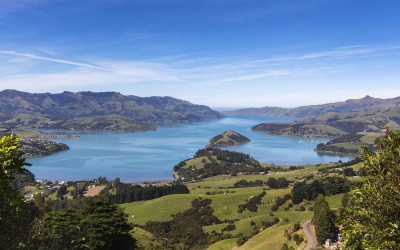
With each option there are opportunities for future enhancement, for example by adding:
- Ecological restoration projects
- Firefighting hydrants along the pipe route and/or for supply to fire tanks or fire ponds (land-based options, particularly Goughs Bay and Pompeys Pillar schemes)
- Enhancement of visitor information at the historic sawmill site (Inner Bays scheme)
- Educational information on wastewater management and habitat enhancement
- Food forest and/or orchard, community gardens (land-based options, particularly Inner Bays scheme)
- Non-potable reuse by properties along the pipe route
- Non-potable reuse via purple pipe by properties throughout Akaroa
- Offset carbon footprint by planting trees or buying carbon credits (harbour outfall scheme)
Additional Information
There is historic information on the Akaroa Wastewater project available on our website(external link)
View commonly asked questions [PDF, 71 KB]
View a web friendly version of the booklet
View the full Working Party Statement
View the full Ngāi Tahu Statement
The technical BECA report [PDF, 9.1 MB]
The technical BECA report appendices can be accessed from Google Drive(external link)
((external link)external link).
The stream ecology report can be accessed from Google Drive(external link)

